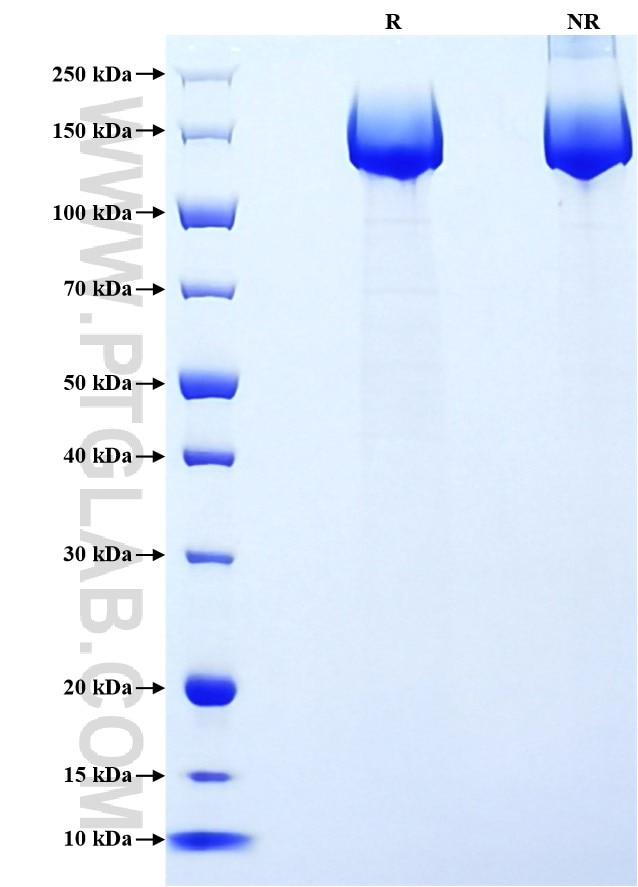Recombinant Human L1CAM protein (Myc Tag, His Tag)
Species
Human
Purity
>90 %, SDS-PAGE
Tag
Myc Tag, His Tag
Activity
not tested
Cat no : Eg0209
Validation Data Gallery
Product Information
| Purity | >90 %, SDS-PAGE |
| Endotoxin | <0.1 EU/μg protein, LAL method |
| Activity |
Not tested |
| Expression | HEK293-derived Human L1CAM protein Ile20-Glu1120 (Accession# P32004-1) with a Myc tag and a His tag at the C-terminus. |
| GeneID | 3897 |
| Accession | P32004-1 |
| PredictedSize | 128.2 kDa |
| SDS-PAGE | 120-200 kDa, reducing (R) conditions |
| Formulation | Lyophilized from 0.22 μm filtered solution in PBS, pH 7.4. Normally 5% trehalose and 5% mannitol are added as protectants before lyophilization. |
| Reconstitution | Briefly centrifuge the tube before opening. Reconstitute at 0.1-0.5 mg/mL in sterile water. |
| Storage Conditions |
It is recommended that the protein be aliquoted for optimal storage. Avoid repeated freeze-thaw cycles.
|
| Shipping | The product is shipped at ambient temperature. Upon receipt, store it immediately at the recommended temperature. |
Background
L1CAM, also known as NCAM-L1 or CD171, is a cell adhesion molecule of the immunoglobulin superfamily. It is a 200-220 kDa transmembrane glycoprotein composed of six Ig-like domains and five fibronectin type III repeats followed by a transmembrane region and a highly conserved cytoplasmic tail. L1CAM is primarily expressed in the nervous system and is involved in neuron-neuron adhesion, neurite fasciculation, outgrowth of neurites, cerebellar granule cell migration, neurite outgrowth on Schwann cells and interactions among epithelial cells of intestinal crypts. L1CAM is overexpressed in many human cancers and is often associated with bad prognosis.
References:
1. M Moos. et al. (1988) Nature. 334(6184):701-3. 2. S Kenwrick. et al. (2000) Hum Mol Genet. 9(6):879-86. 3. Helena Kiefel. et al. (2012) Cell Adh Migr. 6(4):374-84. 4. Timur R Samatov. et al. (2016) Prog Histochem Cytochem. 51(2):25-32. 5. Peter Altevogt. et al. (2016) Int J Cancer. 138(7):1565-76.

